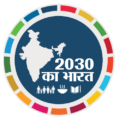When it comes to realizing the Sustainable Development Goals (SDGs), India stands at a critical juncture. The Sustainable Development Goals, often referred to as SDGs, have gained immense global importance since their inception in 2015. These 17 goals, addressing various global challenges, are part of the 2030 Agenda for Sustainable Development, a commitment to create a more prosperous, equitable, and sustainable world for all. In India, the pursuit of these goals has been given the moniker “2030KaBharat,” which translates to “India of 2030.” This endeavor is nothing short of monumental, and the role of education in India in achieving these goals is pivotal.
SDGs in India – A Glance at the Current Landscape
Before diving into the critical role of education, let’s take a moment to understand the current state of SDG progress in India. The Sustainable Development India Report provides valuable insights into India’s journey towards achieving the SDGs. As of our latest assessment, India has made substantial progress in several areas, including poverty alleviation, gender equality, and access to clean water and sanitation. However, numerous challenges persist, especially in the areas of education, healthcare, and environmental sustainability.
Education as the Cornerstone of SDG Goals
Education serves as the cornerstone of sustainable development. It is the catalyst that propels nations towards achieving the SDG goals. Here, we explore the interwoven relationship between education and the ambitious Agenda 2030 in India.
SDG 4 – Quality Education
SDG 4 specifically emphasizes the need for “Quality Education” for all. This goal envisions inclusive and equitable quality education that promotes lifelong learning opportunities for all. In the Indian context, achieving this goal is a complex task due to the country’s sheer size and diversity. India, with its vast population, faces the challenge of providing quality education to every child, regardless of their socio-economic background or geographical location.
Education as an Empowerment Tool
Education empowers individuals and communities. It equips people with the knowledge and skills needed to break the cycle of poverty, improve their health and well-being, and contribute to the development of their communities. Moreover, education is a powerful tool for gender equality, as it enables women and girls to participate fully in all spheres of life.
Access to Education for All
Ensuring access to education for all is a primary objective in India’s pursuit of the SDGs. This includes not only providing physical access to schools but also addressing barriers like affordability, cultural norms, and the quality of education. India has taken significant steps to improve access to education, such as the Right to Education Act, which mandates free and compulsory education for children aged 6 to 14.
Education for Sustainable Development
One of the fundamental tenets of the SDGs is the integration of sustainability into all aspects of development. Education plays a pivotal role in this aspect, as it is through education that individuals learn about environmental conservation, responsible consumption, and sustainable practices. An educated populace is more likely to make informed choices that contribute to environmental sustainability.
Challenges and Opportunities
While education is undeniably the linchpin of India’s journey towards the 2030KaBharat, it faces several challenges.
Quality Disparities
Quality disparities in education are a pressing concern. While urban areas boast well-equipped schools and qualified teachers, rural and remote regions struggle to provide even basic facilities. Bridging this gap in quality is essential.
Digital Divide
The digital divide, exacerbated by the COVID-19 pandemic, highlights the need for equitable access to online education. Millions of students in India lack the necessary devices and internet connectivity for online learning, making it imperative to address this divide.
Teacher Training and Retention
Effective teaching is pivotal to quality education. Investing in teacher training and retention in remote areas can significantly impact the quality of education in India.
Curriculum Relevance
The curriculum must be tailored to meet the evolving needs of the job market, technology, and environmental challenges. This requires a continuous update and refinement of educational content.
On the flip side, these challenges also present opportunities:
Innovative Solutions
India has a rich history of innovative solutions. Leveraging technology and local resources can bridge gaps in education and enhance the quality of learning.
Public-Private Partnerships
Collaborations between the government and private sector can facilitate investment in education infrastructure and improve its quality.
As India strives to achieve the SDGs and transform itself into a sustainable and equitable nation by 2030, it is evident that education is the key to this transformation. To maximize the impact of education, it is crucial to:
- Bridge Quality Gaps: Focus on improving the quality of education in underserved areas.
- Promote Digital Inclusion: Ensure that every student has access to digital resources for learning.
- Empower Educators: Invest in teacher training and create a supportive environment for educators in remote areas.
- Adapt the Curriculum: Continuously update the curriculum to address emerging challenges and opportunities.
- Foster Innovation: Encourage innovative solutions that can revolutionize education delivery.
- Nurture Partnerships: Collaboration between the public and private sectors is essential for sustainable development.
the role of education in India’s journey towards achieving the SDGs cannot be overstated. It is the foundation upon which the entire edifice of sustainable development rests. With concerted efforts, innovative solutions, and a commitment to quality education, India can indeed emerge as the shining beacon of progress by 2030.

